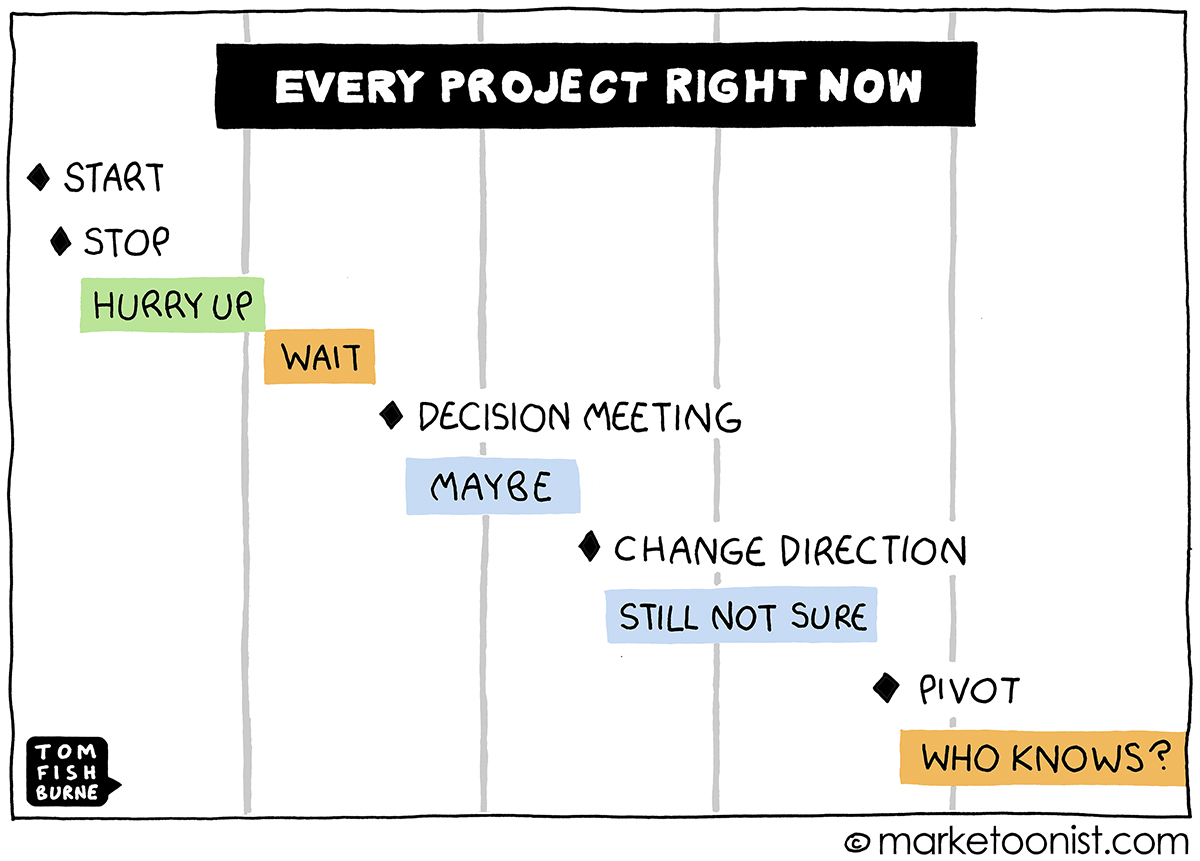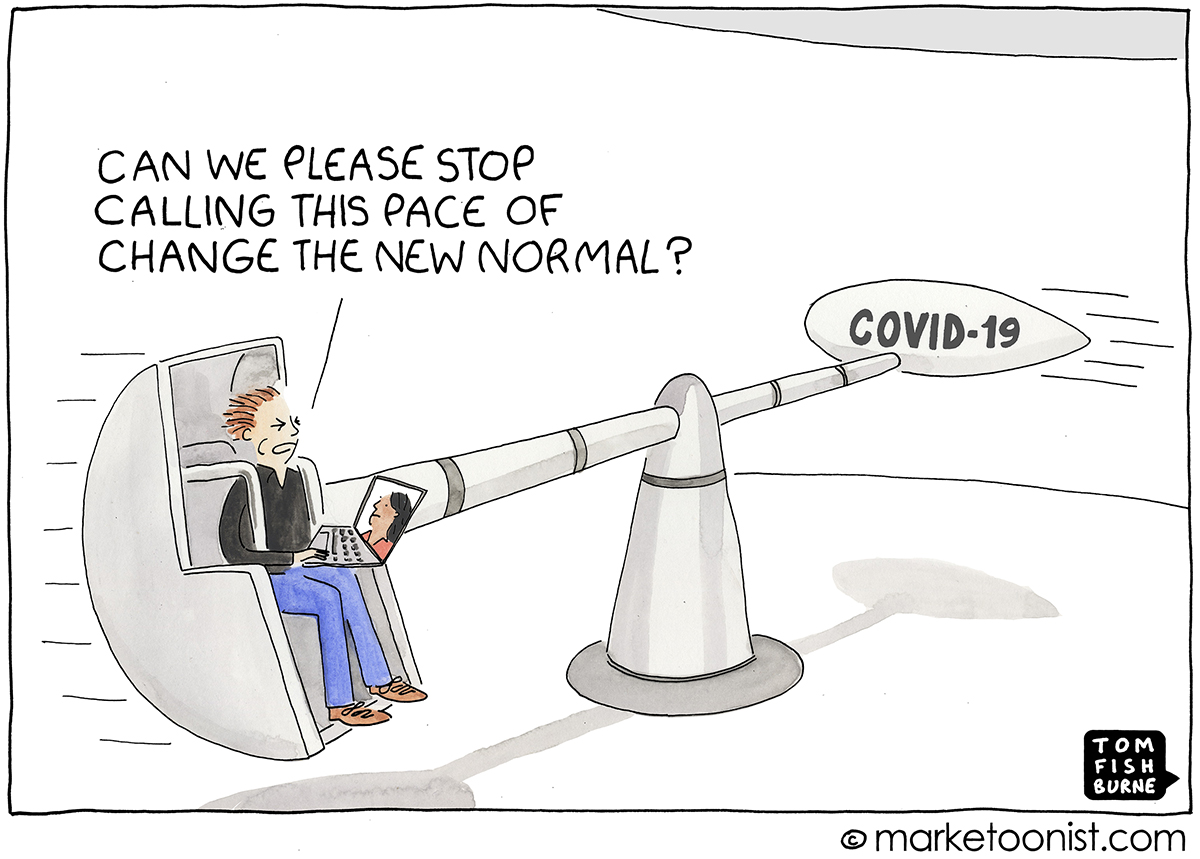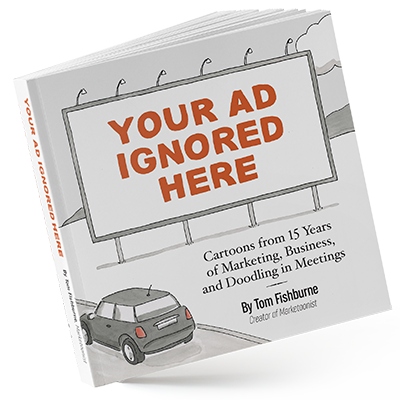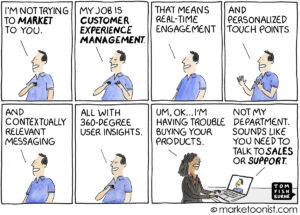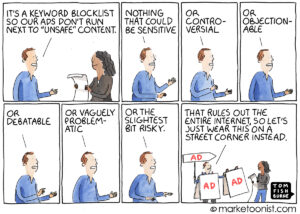“The pace of change has never been this fast, yet it will never be this slow again,” Justin Trudeau famously said in his 2018 speech at Davos.
Of course that was two years before COVID-19 changed and accelerated everyone’s plans beyond recognition.
A recent McKinsey report chronicled a few examples of organizations making heroic overnight changes in the last few months to their business models, technology, and customer experience, including “a global telco that redeployed 1,000 store employees to inside sales and retrained them in three weeks” and “a US-based retailer that launched curbside delivery in two days versus the previously-planned 18 months.”
Yet McKinsey probes just how sustainable this pace of change is. They write, “CEOs recognize the need to shift from adrenaline-based speed during COVID-19 to speed by design for the long run.” They then highlight a few examples of how to cultivate speed by design.
In this chaotic year, many brands and businesses are relying on adrenaline only. Organizations can only run on those fumes for so long. Adrenaline-based speed can lead to burnout.
Merete Wedell-Wedellsborg described this burnout in a recent HBR article as “war room fatigue.” She draws from her experience in developmental psychology to describe three stages that people go through in a time of crisis: Emergency, Regression, and Recovery. In her view, we’re entering the Regression stage, where adrenaline fades and it gets harder to keep up the pace.
It’s a good time to focus on our organizations for the long-term.
Here are a few related cartoons I’ve drawn over the years:
“Digital Transformation” April 2020 (license this cartoon)
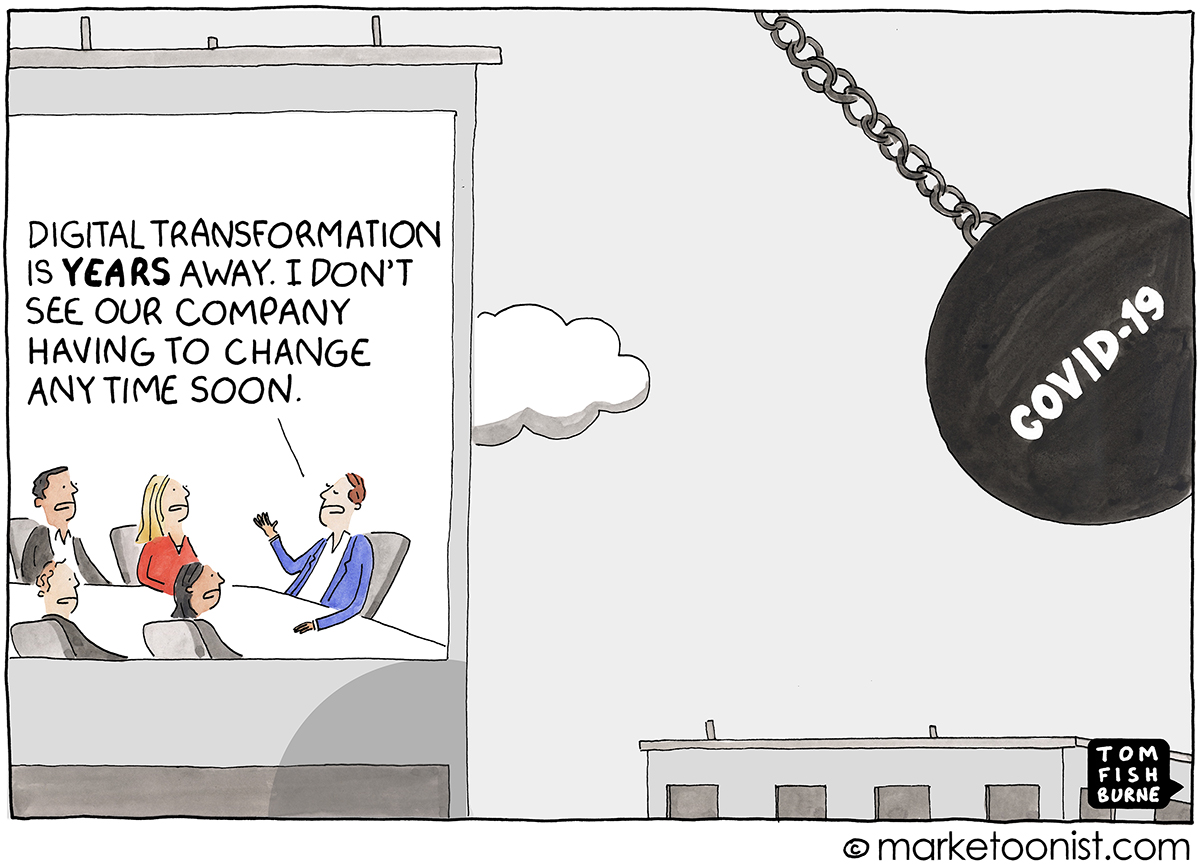
“The New Normal” May 2020 (license this cartoon)
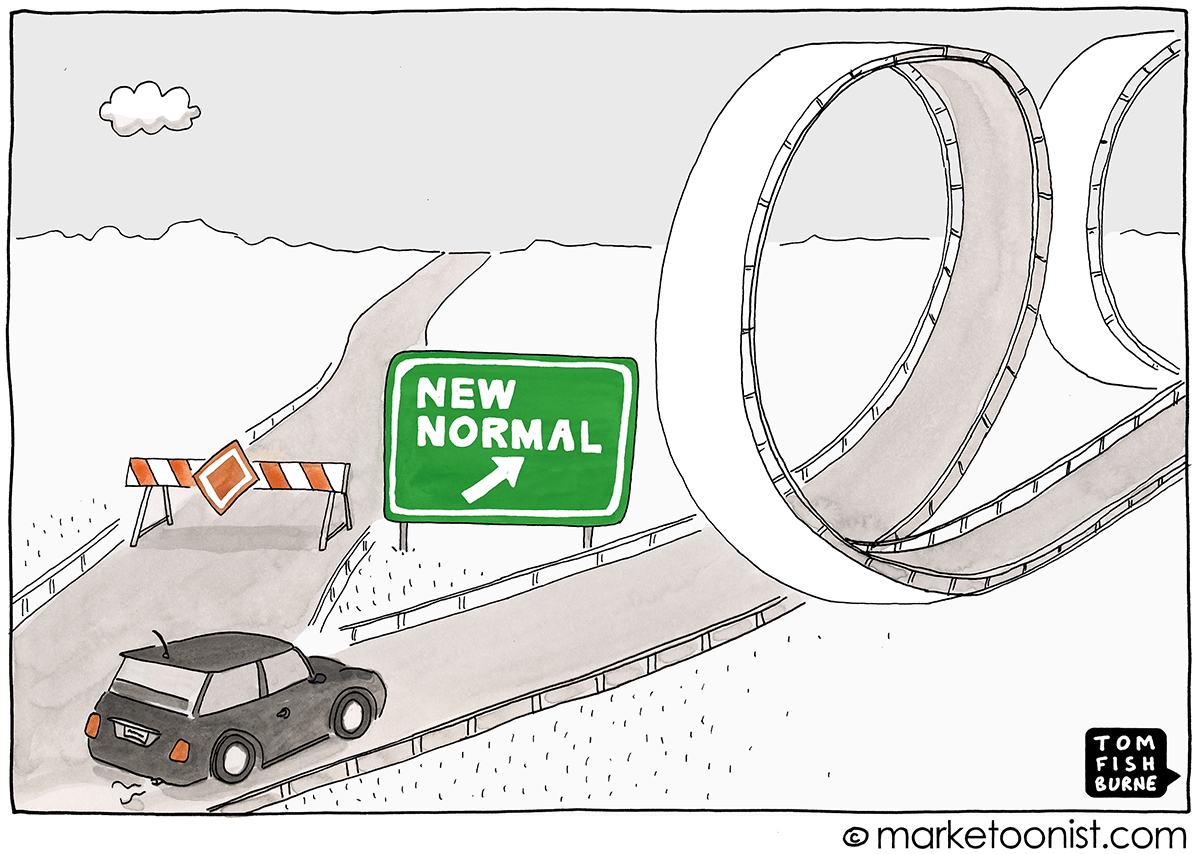
“Decision Paralysis” March 2020 (license this cartoon)
